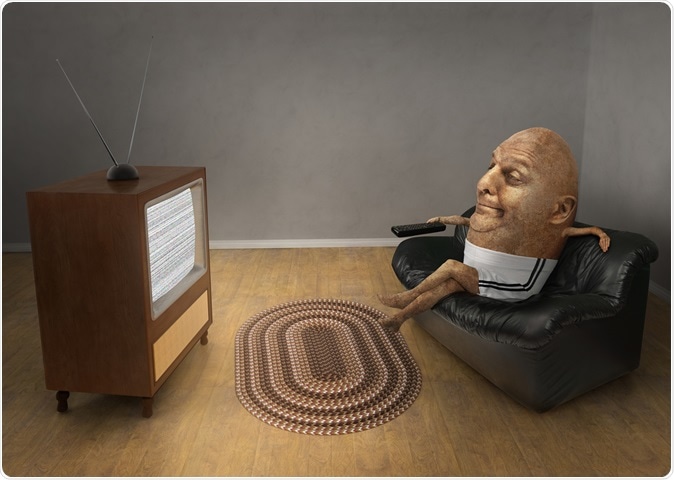According to latest data from The Lancet Global Health released today, over one in four adult worldwide (28 percent or 1.4 billion people) leads a physically inactive life. In some countries around three fourths of all adults do not get adequate exercise, finds the study.

Coach Potato. Image Credit: James Steidl / Shutterstock
The study from the four World Health Organization experts Regina Guthold, Gretchen Stevens, Leanne Riley and Professor Fiona Bull, analysed the trends of physical activity worldwide for the first time and shows that since 2001 there has been little change. This report updates the 2008 estimates of levels of activity among the adult population. Physical inactivity was defined as “not doing at least 150 min of moderate-intensity, or 75 min of vigorous-intensity physical activity per week, or any equivalent combination of the two.”
The study titled “Worldwide trends in insufficient physical activity from 2001 to 2016: a pooled analysis of 358 population-based surveys with 1.9 million participants” appeared in the latest issue of The Lancet Public Health.
Some of the key findings of study were –
- For this study 358 surveys from 168 countries, including 1·9 million participants were included
- Worldwide the prevalence of inactivity was 27.5 percent in 2016.
- The percentage of inactive individuals remained stable from 2001 to 2016 (28.5 percent in 2001)
- Women were less active than men (23.4 percent women compared to 31.7 percent men). The difference was 8 percent globally.
- The highest levels of physical inactivity was seen in women from Latin America and the Caribbean (43.7 percent) followed by those in south Asia (43 percent) and among high income Western countries (42.3 percent).
- People from higher income countries tended to be more inactive at 36.8 percent compared to middle income countries at 26 percent. The percentage of inactive people in low income countries is 16.2 percent.
- Men from Oceania were most active (12.3 percent) and so were those from east and Southeast Asia (17·6 percent) and those from sub-Saharan Africa (17·9 percent).
- Countries and regions with highest levels of inactivity include Kuwait (67 percent), American Samoa and Saudi Arabia (53 percent each) and Iraq (52 percent). Uganda and Moazmbique showed least inactivity at 6 percent.
According to Dr Regina Guthold, “Regions with increasing levels of insufficient physical activity are a major concern for public health and the prevention and control of non-communicable diseases.” Co-author Dr Fiona Bull added, “Addressing these inequalities in physical activity levels between men and women will be critical to achieving global activity targets and will require interventions to promote and improve women's access to opportunities that are safe, affordable and culturally acceptable.”
All countries are urged to up their national efforts to support physical activity to promote health of their populations. People from all ages should be provided with opportunities to become more physically active daily and should be made aware of the benefits write the authors. Regular physical inactivity is linked to poor health, increased risk of heart disease, several types of cancers, diabetes, mental health problems etc.
According to the new Global Action Plan on Physical Activity target, physical inactivity is to be reduced by 10 percent by 2025 and by 15 percent by 2030, write the researchers. As a next step the researchers would work on assessing the levels of activities among the children and youth. Authors conclude, “If current trends continue, the 2025 global physical activity target (a 10% relative reduction in insufficient physical activity) will not be met. Policies to increase population levels of physical activity need to be prioritised and scaled up urgently.”
Let’s be active for health for all